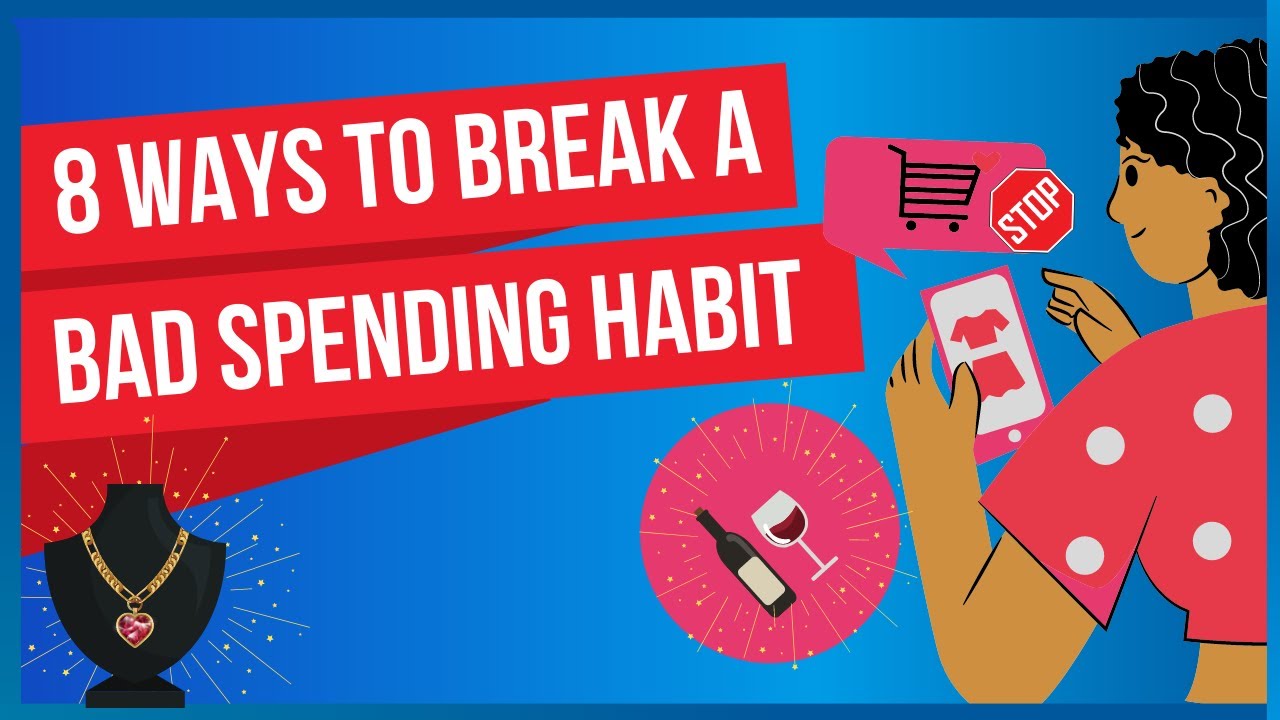‘Girl Math’ TikTok Trend - What You Need To Know About This Spending Habit
‘Girl Math’ TikTok trend is the excuse for spending money on useless things. Even though it seems funny, some people are applying the theory to how they handle their own money, which worries experts.
Author:James DavisAug 28, 202358 Shares58.4K Views

If something costs less than $5, it's pretty much free. That's the strange thinking behind the "girl math" TikTok trendwhere women justify their spending in strange ways When you return something and get your money back, you've made money. If you paid for a trip months ago, by the time you go on it, it's free. It's also free if you buy something with money you found in your pocket.
It's one of dozens of "girl" trends that have taken over the internet, but this time, not everyone finds it funny. Some people think it reinforces the idea that women are careless with their money. It also seems to show a growing belief, especially among Gen Z and young millennial women who like the trend, that money is made up, so spending it is always okay. In other words, money isn't real.
What Does 'Girl Math' Mean?

EXPLAINED: What's The Deal With The "Girl Math" TikTok Trend
In "Girl Math," cash isn't real money, buying things on sale is a way to save, and getting plastic surgery is an "investment in your future self." In July, three New Zealand radio hosts on ZM's Fletch, Vaughan, and Hayley gave the phrase "girl math" a lot of attention. In one of their segments, they helped a caller explain spending $5,600 on travel, lodging, and tickets to all four nights of the Taylor Swift Eras Tour in Sydney. The group said that the purchase was "basically free."
"If I pay for something in cash, it feels like I got it for free,"says one TikToker. What else does she say? If she doesn't go to her manicure session, she can spend that money on something else.
The person who runs the personal finance account @mixedupmoney on TikTok shared a list of her own girl math equations:
“„If the Starbucks app is laded, the coffee is free. If my favorite store is having a sale, I have to buy something, otherwise I'm losing money. Cash is not real money; if I buy something with cash, it is free. And, if you use a $300 purse every day, it is basically free.- @mixedupmoney
As comments and movies show, everyone has their own idea of what "girl math" is. When you don't spend money on something, you have more money to spend on other things. Making money means getting money back. "Anything under $5 is basically free," said TikToker @samjamesssss.
What Do Personal Finance Experts Think?
Lindsey Stanberry, a former senior editor at Fortune and the author of The Purse newsletter says that she likes the girl math trend because it is funny and easy to understand. She also thinks it's "weird" that young women are portrayed as people who "don't really know how to handle money."
“„While I think that the trends definitely started as good fun ... the women who started it are hilarious and it's very funny and very tongue in cheek and that's great - it can quickly spiral into being taken as a representation that women don't know how to manage their money, and I don't think that's true.- Lindsey Stanberry
Stanberry says that she also does some girl math: coffee bought with a loaded Starbucks card is free, insurance reimbursements for medical bills are "found money," and cash back on credit cards is also "found money."
In the end, she says that she thinks the trend "dumbs down" the spending habits of young women, but she likes that it makes "women feel comfortable talking about their finances."
“„You could argue that it's not bad math. They're being thoughtful about how they're spending their money.- Lindsey Stanberry
How To Save Money In 2023?

10 Money Saving Tips No One Is Talking About For 2024
In the dynamic landscape of 2023, effectively saving money involves a combination of time-tested strategies and new-age approaches. To begin, crafting a comprehensive budget is paramount. This entails scrutinizing your income and meticulously categorizing your expenditures. By visualizing where your earnings are allocated, you can identify areas ripe for reduction. Modern tools and apps can simplify this process, granting you a clear financial snapshot.
Automation emerged as a powerful ally in this era. By orchestrating automatic transfers from your checking to savings accounts immediately upon payday, you're ensured a consistent savings rate. This precludes the temptation of diverting funds towards impulsive purchases, fostering a disciplined approach. Simultaneously, it's crucial to assess your regular outlays. Prune superfluous expenses like dining out frequently or underutilized subscriptions. Prioritize utility overindulgence.
The digital age offers myriad techniques to stretch your currency further. Harness the prowess of the internet to seek discounts, employ virtual coupons, and conduct price comparisons. Browser extensions and online shoppingtools function as vigilant assistants in unearthing the most favorable deals, making frugal choices accessible at your fingertips. Additionally, opt for home-cooked meals over restaurant dining, transcending savings to both your finances and well-being.
In navigating the financial landscape of 2023, prudent credit card use emerges as an axiom. Restrict its employment to necessities and honor the balance completely each billing cycle. This safeguards you from incurring exorbitant interest fees, preserving your financial stability. Capitalize on the prevailing low-interest climate by refinancing loans and mortgages, easing your financial burden over time.
Energy efficiency takes center stage in this eco-conscious era. Harness technology to optimize your home's energy consumption—switch to LED lighting, rectify drafts, and enhance insulation. These seemingly minor steps accumulate into tangible reductions in utility bills, accentuating the intersection between eco-friendliness and economy.
As technology evolves, so does the realm of investment. Research low-cost index funds and other contemporary investment avenues. Exercise caution, as investing harbors inherent risks. Consider enlisting the expertise of a financial advisor, especially if delving into complex financial instruments. Balance your portfolio to align with your risk tolerance and financial objectives.
Unearth opportunities within your living space by decluttering and selling unused possessions online or through yard sales. This dual-pronged approach not only bolsters your savings but also streamlines your living environment. On the practical front, economize by buying in bulk for frequently used items. Furthermore, cultivate a DIY ethos for minor home improvements and repairs, curbing outsourcing costs.
Prioritize your health and well-being as a cornerstone of financial preservation. Adopt preventative measures and lead an active lifestyle to minimize medical expenses in the long run. Embrace accessible online resources for skill acquisition instead of investing in pricy courses, optimizing the digital learning ecosystem.
How To Avoid The Habit Of Overspending?

How To Break Bad Spending Habits
Avoiding the habit of overspending necessitates a multifaceted approach that combines self-awareness, self-discipline, and practical strategies. The allure of instant gratification and the pervasive consumer culture can make curbing spending impulses challenging, but with concerted efforts, it's entirely feasible.
Firstly, setting clear and tangible financial goals serves as a guiding light. These objectives can range from building an emergency fund to saving for a vacation or a major purchase. By focusing on these goals, you cultivate a mindset that places value on saving rather than splurging.
Crafting a well-structured budget forms the bedrock of responsible financial management. This involves a thorough examination of your income and a detailed breakdown of your expenses. Allocate specific amounts to categories like housing, groceries, entertainment, and savings. With such a blueprint in place, you gain a panoramic view of your financial landscape, making it easier to identify areas where spending can be scaled back.
Tracking your spending is akin to shining a spotlight on your financial habits. Utilize tools such as budgeting apps or spreadsheets to meticulously record every expense. This practice unveils patterns and triggers that lead to overspending. Armed with this insight, you can take proactive steps to counteract those triggers.
The mode of payment you opt for can also play a role in curbing overspending. Transitioning to cash or a debit card for day-to-day transactions introduces a tangible connection between your money and your purchases. The physical act of parting with cash can prompt a moment of reflection before making a purchase, reducing the likelihood of impulsive buys.
Delayed gratification serves as a potent weapon against overspending. Train yourself to postpone purchases by a set period, such as 24 hours or a week. This breather provides time to assess whether the desired item is a genuine necessity or merely a fleeting impulse.
A conscious effort to distance yourself from retail therapy is pivotal. Recognize that emotional spending can be a temporary Band-Aid for underlying issues. Seek healthier outlets for emotions, such as engaging in hobbies, practicing mindfulness, or pursuing physical activity.
Furthermore, minimizing exposure to temptation is essential. Unsubscribe from marketing emails, unfollow brands on social media, and prune your digital environment of triggers that encourage spending. Crafting shopping lists ahead of time and adhering to them staunchly during trips to the store or online shopping also curbs the tendency to overspend.
Mindfulness remains a cornerstone of prudent financial management. Regularly assess your spending decisions by asking if they align with your financial goals and values. Implementing the 24-hour rule - waiting a day before making a significant purchase - fosters a rational perspective, helping you distinguish between genuine needs and momentary desires.
Collaborating with a friend or family member to stay accountable can be remarkably effective. Sharing your financial goals with someone you trust can introduce an element of external support and gentle reminders when temptation strikes.
Try 50-20-30 Budget Rule When Spending And Saving Money
Video unavailable
This video is unavailable: Original link to video
The 50-20-30 budget rule is a simple and popular guideline for managing your personal finances. It helps you allocate your income into three main categories to ensure a balanced and structured approach to spending, saving, and investing. The rule is designed to provide a framework that's easy to follow, even for individuals who might not have a lot of experience with budgeting. Here's how the 50-20-30 budget rule works:
50% For Needs
Allocate 50% of your after-tax income (your take-home pay) to cover your essential needs. These are the necessary expenses that you can't easily avoid, such as housing, utilities, groceries, transportation costs (like commuting or car payments), and insurance premiums. This category ensures that your basic living necessities are covered and that you have a stable foundation.
20% For Savings And Financial Goals
Dedicate 20% of your income to savings, investments, and achieving your financial goals. This category encompasses contributions to your emergency fund, retirement accounts (like 401(k) or IRA), long-term savings, and other financial objectives. Prioritizing this portion helps you build a secure financial future and work towards your aspirations.
30% For Wants
Reserve 30% of your income for discretionary spending or "wants." These are the non-essential expenses that bring enjoyment to your life, such as dining out, entertainment, vacations, shopping for non-essential items, and other leisure activities. This category acknowledges the importance of enjoying life while maintaining financial balance.
It's important to note that the 50-20-30 budget rule is a general guideline and might need adjustments based on your individual circumstances. For instance:
- If you have high levels of debt, you might need to allocate more than 20% to debt repayment until your debts are under control.
- If you have aggressive financial goals (like saving for a large purchase or paying off student loans quickly), you might allocate more than 20% to savings.
- If your housing costs are particularly high (or low), it might impact the percentage you allocate to needs.
The 50-20-30 rule is not a one-size-fits-all solution, but it provides a starting point for budgeting and encourages a balanced approach to managing your finances. As your circumstances change, you can adjust the percentages accordingly. Regularly reviewing your budget and tracking your expenses will help you stay on top of your financial goals and adapt your budget as needed.
People Also Ask
What Is The "Girl Math" Trend On Social Media All About?
The "Girl Math" trend on social media is a light-hearted phenomenon where users, often young women, humorously justify their spending habits through creative and sometimes exaggerated reasoning. It involves making fun connections between expenses and the concept of "free" or "investment," even when the connection might not be logically sound.
Can You Provide An Example Of "Girl Math" From The Social Media Trend?
An example of "Girl Math" is when someone says that buying tickets to an event well in advance makes the event "free" on the day off because they had already spent the money earlier. It's a humorous way of rationalizing expenses by finding unconventional ways to view them.
Is The "Girl Math" Trend Exclusive To Girls?
No, the trend isn't exclusive to girls. While it's called "Girl Math," the trend of justifying spending with creative reasoning is something that people of all genders do. The examples shared are relatable to many individuals, regardless of gender.
Why Is There Concern About The Impact Of The "Girl Math" Trend?
The concern about the "Girl Math" trend lies in the possibility that it might inadvertently normalize or encourage unhealthy spending habits, particularly among young women. While the trend is meant to be humorous, it could potentially downplay the importance of responsible financial decisions.
Conclusion
In the world of social media trends, "Girl Math" has emerged as a humorous way for individuals to playfully rationalize their spending habits, often finding unconventional connections between expenses and the concept of "free" or "investment." While the trend initially seems gender-specific, the underlying behavior of justifying purchases through creative reasoning is something that transcends gender lines.
However, it's important to recognize that the trend's lightheartedness should not overshadow the significance of responsible financial decisions. Regardless of whether it's called "Girl Math" or not, the practice of justifying overspending can have real consequences on personal finances, contributing to issues like credit card debt.
While trends may come and go, the principles of responsible financial management remain constant. Striking a balance between prudent saving and mindful spending is a goal that everyone, regardless of gender or social media trends, can strive for to ensure a secure and prosperous financial future.

James Davis
Author
James Davis keeps you updated daily with the best shopping tricks, hacks, and frugal living tips that you won’t find anywhere else. He also talks and writes about creative ways to save money, job opportunities like clever ways to make money from home, great jobs for teens, and online jobs that pay well.
James also enjoys working on Social Media campaigns for major brands. He believes in creating a personal relationship between the brand and its consumers. He is very much into taking the corporate out of the brand and bringing it down to the level where consumers can feel comfortable interacting and taking the brand seriously.
Latest Articles
Popular Articles